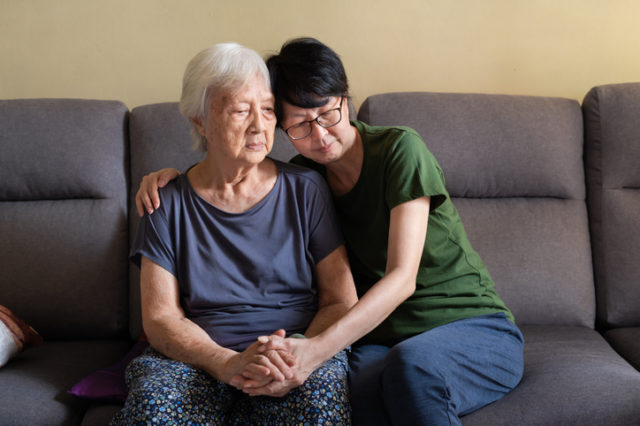
In some Eastern cultures, young adults grow up with a strong sense of community and familial ties. Their Confucian values, such as filial piety, encourage positivity and respect toward their aging family members and aging overall. This view empowers the young generations to care for the elderly when they’re sick or too old to care for themselves.
Although many younger generations find pride in their duty to care for their aging family members, there are some challenges as they work with the current healthcare system. Certain language barriers can make working with the healthcare system extremely difficult, and seniors may experience high levels of loneliness because of it.
Not only does the current healthcare system affect the elderly, but it also makes it hard for caregivers to thrive. Caregiving is a virtuous task, but it’s often stressful and costly. It can be pretty challenging for many. According to the Centers for Disease Control and Prevention, nearly two in five caregivers have at least two chronic diseases. And according to a recent study by the American Association of Retired Persons, family caregivers reported spending an average of $7,242 out of pocket annually on costs related to caregiving.
Why culturally sensitive care is important for aging populations and their caregivers
There are many reasons why culturally sensitive care (i.e., care that acknowledges a patient’s cultural values, beliefs, and practices) is important. But it is especially important for the elderly and their caregivers. When healthcare professionals become culturally sensitive, they can create comfortable, safe, and supportive environments for receiving treatment and alleviate financial and emotional burdens from caregivers.
The following are some practical ways to provide support.
- Break down language barriers
Although many younger generations have a desire to care for their aging relatives, family members are often separated in proximity, making it hard for caregivers to make it to doctor’s appointments, translate, and provide assistance.
To help, healthcare providers can provide language support when providing care for Eastern cultures. Support professionals should answer patients’ queries thoroughly in a language they understand. There should be a network of doctors and care providers who understand language and cultural needs. Offering paperwork and other materials in their language can also make their healthcare experience much smoother.
By providing information in a language seniors can understand, healthcare providers can alleviate patient stress and take the pressure off caregivers traveling to appointments or deciphering doctors’ notes in a foreign language.
- Build community care centers
Actively belonging to a community is important for some Eastern cultures. Asian American seniors often visit churches, senior centers, ethnic supermarkets, and more to meet with others. These institutions can provide spaces for seniors to feel welcome and understood. They also provide opportunities for health education — which is extremely valuable. One study reveals that an individual’s sense of community belonging is interconnected with their overall health status. Community can even influence a person’s self-perceived mental health.
By setting aside funds to build community centers in specific Eastern communities, healthcare providers can ensure patients and their caregivers can quickly access healthcare information, translators, and treatment when needed. A Medicare Advantage company located in California has built three community centers serving Chinese, Vietnamese, and Korean communities in Southern California. The centers offer Medicare seminars, yoga, watercolor painting, and broker training, and they even host birthday parties for seniors within those communities.
- Connect stakeholders
It is one thing to have isolated community centers, hospitals, and Medicare plans for Eastern cultures, but it is way more effective to connect all stakeholders so those seeking assistance can get everything they need all at once. After creating a community center, healthcare providers should partner with doctors, community health workers, and local organizations to bring resources to their central location. Think of everything that is involved in holistic care.
The world is slowly aging, and by 2060, around 94.7 million older adults will be in the U.S. Without the proper care tactics in place, healthcare providers risk losing people at an earlier age and burning out family caregivers. The good news is that incorporating culturally sensitive practices can significantly reduce the negative impacts on patients and caregivers alike. Healthcare providers should consider the aforementioned changes to assist Eastern populations under their care.
Photo: goc, Getty Images








